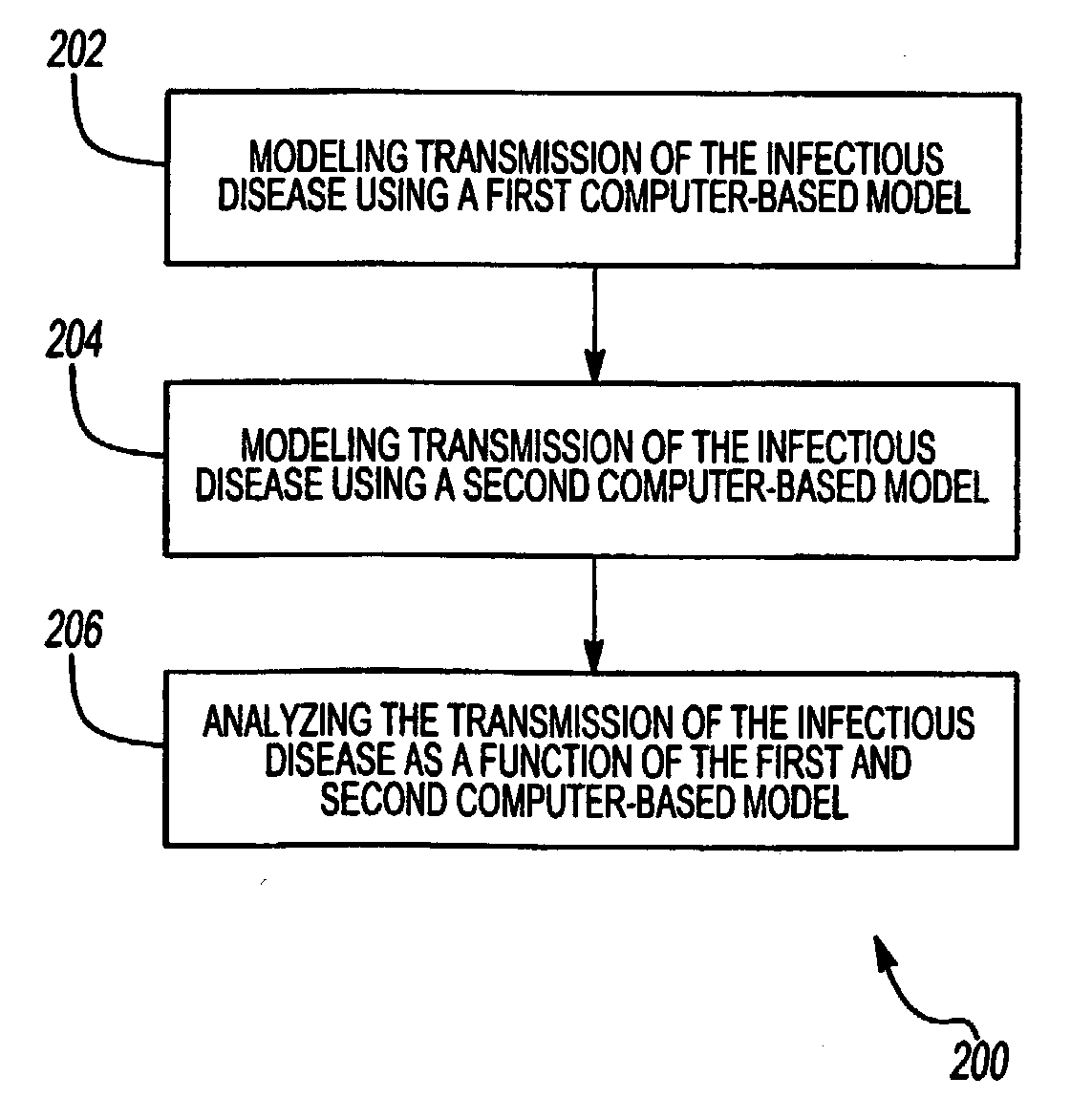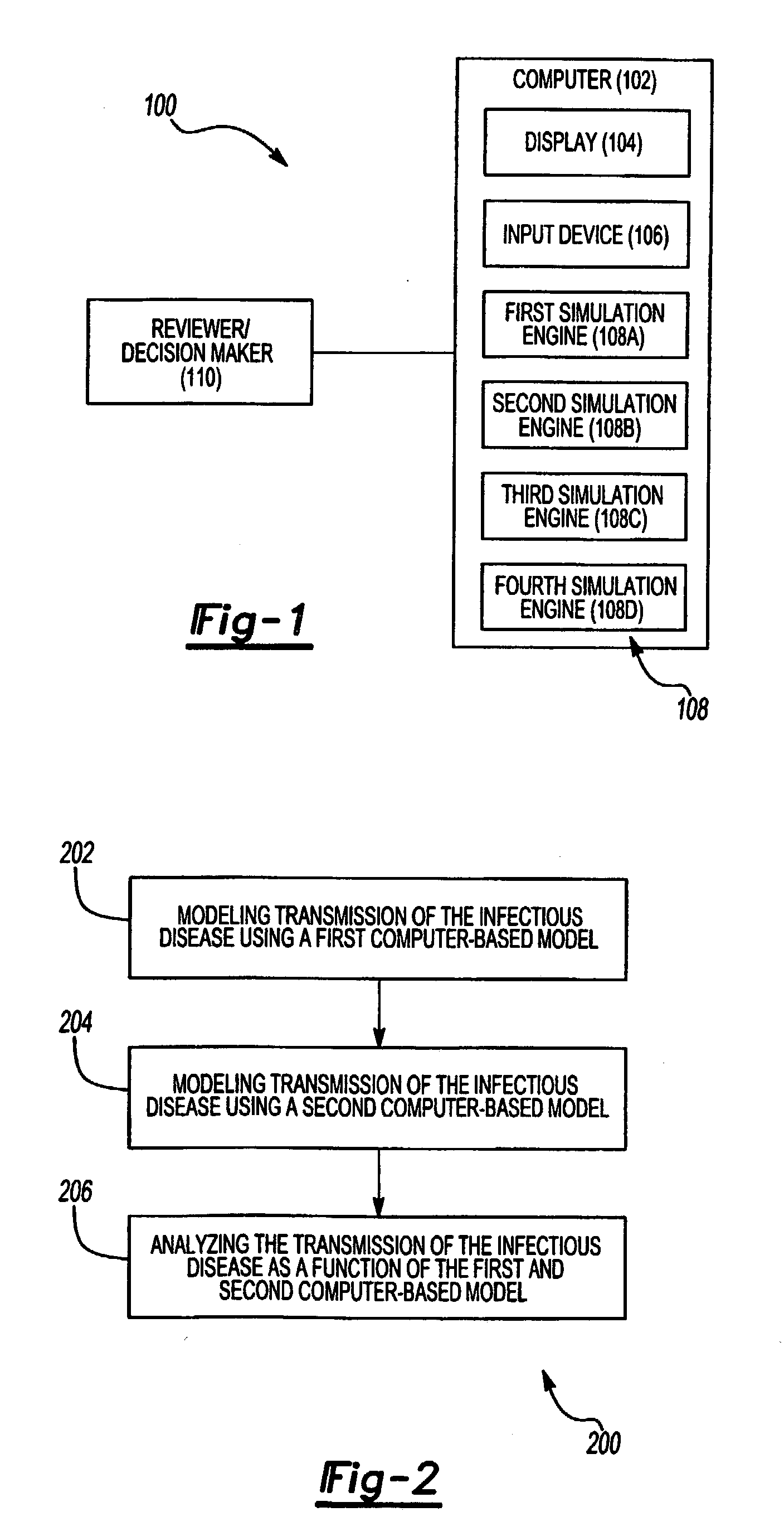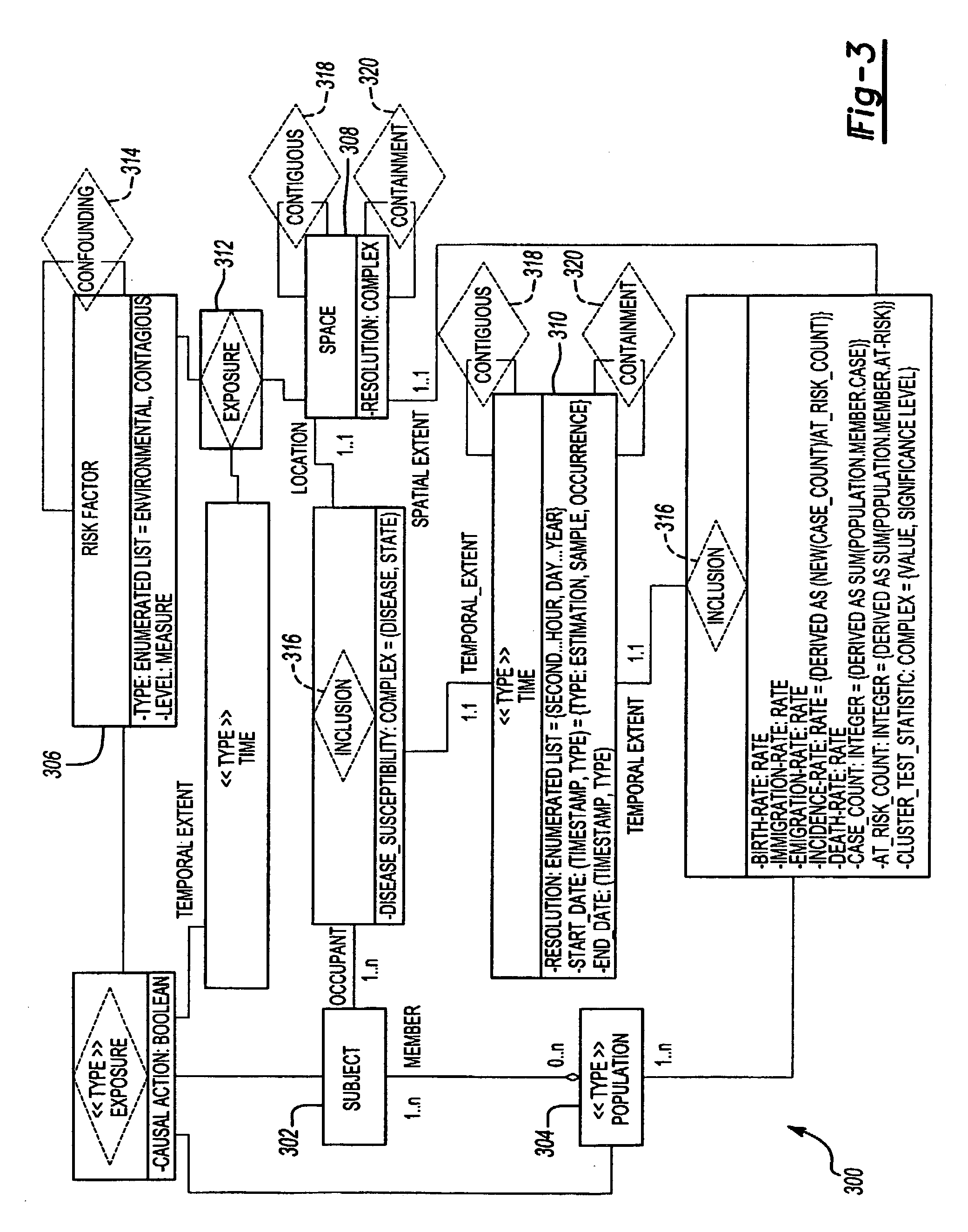Model transition sensitivity analysis system and method
a model transition and sensitivity analysis technology, applied in the field of infectious disease analysis, can solve the problems of inability to assess decision makers, difficult to adapt to model type and complexity assumptions, and all models are wrong, so as to improve our ability to make sound disease surveillance and control decisions
- Summary
- Abstract
- Description
- Claims
- Application Information
AI Technical Summary
Benefits of technology
Problems solved by technology
Method used
Image
Examples
Embodiment Construction
[0025]With reference to the drawings an in operation, the present invention provides a system 100 and method 200 for review and analyzing transmission of an infectious disease is provided.
[0026]With specific reference to FIG. 1, the system 100 is preferably embodied in software running on a computer 102, e.g., a general purpose computer. The computer 102 includes a display 104, such as a cathode-ray tube (CRT) device or a flat panel display, and an input device 106, such as a keyboard, mouse, and / or microphone. The computer 102 has stored thereon at least two computer-based simulation engines 108 for modeling the transmission of the infectious disease, e.g., Cryptosporidia, influenza, or HIV. Preferably, the system 100 includes first, second, third, and fourth computer-based simulation engines 108A, 108B, 108C, 108D.
[0027]Data regarding the infectious disease is input by a user 110. The user 110 inputs parameters to the computer-based simulation engines and reviews the results displ...
PUM
 Login to View More
Login to View More Abstract
Description
Claims
Application Information
 Login to View More
Login to View More - R&D
- Intellectual Property
- Life Sciences
- Materials
- Tech Scout
- Unparalleled Data Quality
- Higher Quality Content
- 60% Fewer Hallucinations
Browse by: Latest US Patents, China's latest patents, Technical Efficacy Thesaurus, Application Domain, Technology Topic, Popular Technical Reports.
© 2025 PatSnap. All rights reserved.Legal|Privacy policy|Modern Slavery Act Transparency Statement|Sitemap|About US| Contact US: help@patsnap.com



